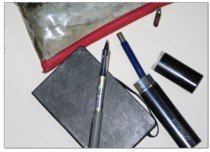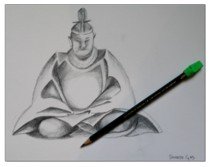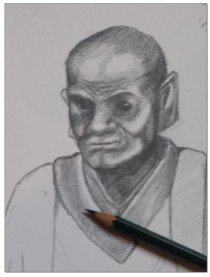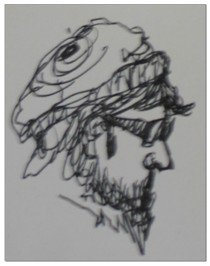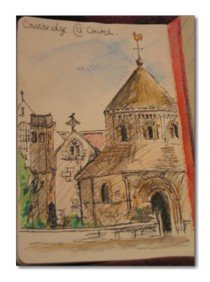SKETCHING ON LOCATION
The author Julia Cameron introduced me to the idea of an artist’s date in her best-selling book The Artist’s Way. It can be really hard for any of us to schedule time to spend on something we really want to do but persevere – the rewards are worth it.
My tips on creating your own ‘artist’s date’ are slightly different to Julia Cameron’s as hers are more about creating space for creativity in general.
Make a date specifically for sketching. Ideally by yourself or else with others who are going to be drawing too. Don’t try to do this with other people who are not drawing – believe me it just won’t work unless they go away and leave you alone for a set amount of time.
You don't need fancy kit to get started - a small sketchbook and a pen and pencil is all - and perhaps a plastic pencil case or similar to keep it all neat and protect your bag from ink and graphite!
So once you have that - the next decision is what you are interested in drawing:
Sketching in a Museum
Sketching People
- If you want to draw people - perhaps hang out in a coffee shop at a railway station or in a park. But remember that people won't be standing still for long so you'll have to work quickly capturing their 'gesture' - great practice.
- Choose a location/venue where you'll be comfortable drawing – think about whether you’ll have somewhere to sit, what vantage points are there, will you be able to draw discreetly?
- Let go of preconceptions. Sketching on location isn't about producing a really worked-up piece of art - it's about practising your observation and drawing skills and giving yourself the space to practise just being an artist.
|
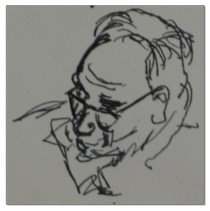
- If you are drawing in a café or similar, buy something from them (and if you’re there a while, buy a few things!). It’s only fair if you are taking up a table that you behave like a paying customer. Also, choose a time that they are less busy and then they won’t resent you taking up a table.
Do more than one drawing - you'll need to warm up and get into it so let go of the critical self-judging lodger on your shoulder and just get stuck in. Fill your paper with little sketches...
|
Sketching Buildings
- Remember that all drawing is the same - whether you are drawing people, objects, landscapes or buildings, the same skills are used.
- Drawing a building is a good way to practise the skill of sighting ie. how big something is in relation to something else.
- Find somewhere comfortable and out of the way for you to sit. I sat across the road under a tree, away from the main thoroughfare, to draw this church which is actually on a main road.
- You can always add the colour at home - which is what I did here. Although I think I preferred it without the colour!
|
SKETCHING TIPS
- Whenever you are drawing in a public place people are going to watch you. Chances are they are going to hang round for a bit too. I find I can ignore them quite easily but if you find it off-putting perhaps stop drawing for a minute or two and they'll soon get bored and wander off. Most people are fascinated to watch others draw. Being watched is often the biggest barrier to sketching in public so see if you can get over it.
- Make sure you have what you'll need in terms of supplies but don't overload yourself either. Keep it simple.
- A little pencil case can hold a small sketchbook, a couple of pens and will fit easily into a bag.
- Experiment with working in pen when you are sketching - you can't erase mistakes so you just keep going. If you don't like what you are doing just start again. It can be looser and freer than pencil.
- Take a camera with you and you can capture your subject in case you want to work on it some more when you are back home. Having a reference photograph can be really helpful.
|
If you've enjoyed reading this article why not sign up for my free monthly newsletter Drawing Matters, you can view back issues on the Newsletter page or sign up here:
Leave Sketching and return to Drawing Tips here
